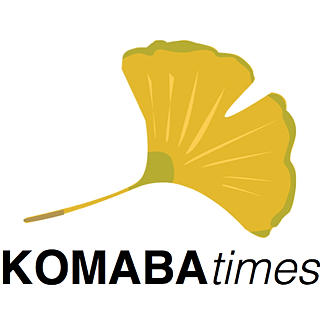Food for Thought: The Rural Underpinnings of Tokyo's Marketplace
- Komaba Times
- Jan 13, 2017
- 4 min read
Updated: Oct 10, 2019
By SAMUEL BRUSTAD

Photo by Sam Brustad, Invisible Tokyo
A city like Tokyo can sometimes feel all consuming, even insular. In my time here, I have been struck by the intense distinction that I feel between the metropolitan centers and Japan’s rural areas. Not only do I feel the people live at a different pace, but the very foundations of their world seem to be entirely different. This is perhaps a phenomenon not unique to Japan, yet here it seems to occur on an entirely different scale. Particularly for me, growing up in an exceptionally rural environment has meant that such a huge transition has often felt jarring. But within Tokyo I do see attempts to link these two spaces. So when presented with the opportunity to further explore an aspect of ‘(in)visible’ Tokyo, it seemed only natural that I should explore further the relationship between country and city, and within that broad heading to focus on perhaps the most fundamental element of that, food production and consumption.
On any given weekend, nestled at the base of the rather imposing UN University, Tokyoites have the rare privilege of consuming food as nature intended; at the Marché Japon farmers’ market.
With the very impressive motto,
“Water, sun and the earth”,
the market touts to create an environment where “‘people who make food’ can meet with ‘people who eat the food’”.
This idea of locally sourced food is hardly unique. But its setting, along the road connecting fashionable shopping districts such as Shibuya, Aoyama and Gaienmae proves to be a very interesting space for such a market to exist.
Particularly in that it has a huge influence over the ethnic and socio-economic type of people who tend to shop there. The cliental is almost exclusively Japanese, the prices are actually quite high in comparison to conventional supermarkets, the signs and advertisements have little to no English and the emphasis is that this is a place for families. It certainly feels like a space for one to reminisce about a simpler time, or to observe the rustic beauty of Japan’s rural underpinnings. It is interesting to consider why this might be so. In the context of Leisure Studies, some academics have argued that the city-dwellers of industrialised countries tend to look at the countryside as a romanticized place where they can escape stress and, particularly, the multicultural nature of urban life. So there are certainly arguments to be made that many people who come to occupy these spaces of intense ‘Japaneseness’ do so out of a kind of ‘natsukashii’ (nostalgic) impulse that pushes them to places reminding them of a simpler, less complicated time that this rural connection facilitates.
Another feature of this market space that I found distinctive was that it was very much geared around the consumers as opposed to the producers. The effect being that it was tinged with a certain fakeness, like a sanitized facsimile of a ‘real’ rural marketplace. There are spaces in Tokyo, such as the Tsukiji fish market, where the consumer is required to have specialized knowledge and approach the shopping experience more seriously in order to participate properly. Yet here it felt much more relaxed, also the shopkeepers were keen to discuss their methods and provide samples or their wares. If consumers were looking for a truly authentic experience, they could drive out into the countryside or to head to the docks to get the best deals, and some do.
However, for me the Marché Japon famers market represents a space in the center of the Tokyo metropolis where consumers can take a break from the rush and bustle. Something comforting, where one can forget the pressure of modernity and embrace what it means to be an inaka-mono (country dweller). As a foreigner however, this left me feeling even more out of place, even a little excluded. It may be expensive, and the layout of the food might be slightly too pristine to be authentic, but it contains all the necessary traits and buzzwords to make it hit with city-slickers, organic, ethical, locally sourced. They even had a juicing station. So while this is ostensibly a place to buy and sell food, the market seems to be constructed so to provide a trendy, relaxed and natsukashii environment to promote values of rustic ‘Japanese-ness’.
I am slowly learning that to live in Tokyo is to become absorbed by the metropolis. But for Tokyoites who want a taste of the country life, without having to sacrifice too much of their ever limited time, the Marché Japon Farmer’s Market represents a space where these two worlds collide. However, as with all such interactions it is important to understand to whom the focus is being directed at, and who is being excluded. So by all means I encourage you to enjoy the wonderful tastes and sensations to remind us of Japan’s rural underpinnings. But remember, Marché does not an inaka-mono make.
Bibliography
-Spraklen, Karl. Whiteness and Leisure. Palgrave and Macmillan. 2013. -United Nations Univeristy. “Farmers Market Comes to the UNU.” Accessed 6th January, 2010. http://ourworld.unu.edu/en/farmers’-market-comes-to-the-un. -Williams, Raymond. The Country and the City. Oxford University Press, 1975.
This story was originally published on July 27, 2015 as a submission for a course called “(in)visible Tokyo” at the University of Tokyo.





Comments